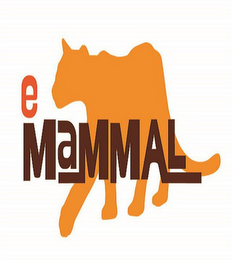Study Design Recommendation for a State
Study Design > State
Until our North Carolina Candid Critters project, no one has attempted to survey mammals at the scale of a state or province. We believe it can be accomplished through citizen science camera trapping. Candid Critters started in 2016 by working with the North Carolina Wildlife Resources Commission to survey the mammals of the state with citizen scientists.
Based on discussions with commission staff, we created three biological objectives for this study:
- Estimate deer recruitment through fawn/doe ratios.
- Quantify the distribution and occupancy rates for coyotes.
- Map the distribution and occupancy of numerous wild species across the state including: bear, elk, weasels, fox squirrels, red squirrels, armadillos, woodrats, feral pigs, chipmunks and striped skunks.
Data for the 2nd and 3rd objectives can be collected year-round, whereas data for fawn/doe ratios can only be collected over ~1 month when fawn movements are similar to doe movements, non-harvest fawn mortality is low, and prior to substantial antlerless harvest seasons. Therefore, we have created two study designs, one more intensive survey in the early fall focusing on fawn/doe ratios and a second larger-scale survey across the rest of the year for other species.
In both surveys we use county boundaries to stratify the area of the state, and aim to distribute cameras within each county according to the percentage of land it has in three major habitat types: forest, open, developed (wetlands and open water are excluded). For example, if a county is 88% forested, 7 % open habitat (i.e. agriculture), and 15% developed we would try to place cameras in these habitats at the same proportion. This will ensure that the data obtained from the camera traps is representative of the county as a whole.
For the fawn/doe ratios we use 2-week deployments, which is shorter than our typical 3-4 week deployments, so that each camera can be moved once within the ~1 month window when we can obtain the best data on fawns. Based on our preliminary data, to obtain an accurate estimate of fawn/doe ratios (within a 10% margin of error), the sample-size should be 75-100 two-week camera sites sampled within a given county. To obtain sufficient data we will focus on a subset of counties for the fawn data, targeting 2-3 representative counties within each of the five biological deer zones across the state, and repeating these each year.
After the fawn surveys we will redistribute the cameras across a larger area to survey for coyotes and other mammals during the rest of the year. We will distribute cameras across all counties for three sampling seasons: winter, spring, and summer. Over three years, we will aim for at least 28 camera sites per season per county, stratified equally along a development gradient and within different habitat types and spaced a minimum of 200m apart. Cameras will run for 3-4 weeks at a site and then moved to a new site. Cameras sites will be chosen randomly within each stratification level, to the extent possible with volunteers.
"
Figure 1: One example county showing survey design for obtaining doe/fawn ratios. Camera distribution is proportional among 3 primary habitat types: forest, open, developed. Potential citizen science volunteer sources are also listed.
Volunteer recruitment and training
We will recruit volunteers to help run our camera traps from a variety of sources, including middle schools, colleges and universities and private citizen “Bring Your Own Camera" (BYO) volunteers (amateur naturalists, hunt clubs etc). We will work with NCWRC regional staff and local partners to recruit and manage volunteer camera trappers.
This work will include collaborating with K-12 students and teachers using curriculum designed to meet existing learning standards. Teachers will have access to training modules to bolster their skills in data analysis and visualization to teach these skills at an age appropriate level to students. Students will sample sites near their schools or bring cameras home to sample their yards and will use eMammal web tools to compare their data to other sites and communicate with other schools in the program.
Discussion
We would love to hear your thoughts and questions on this idea, please contact us!


